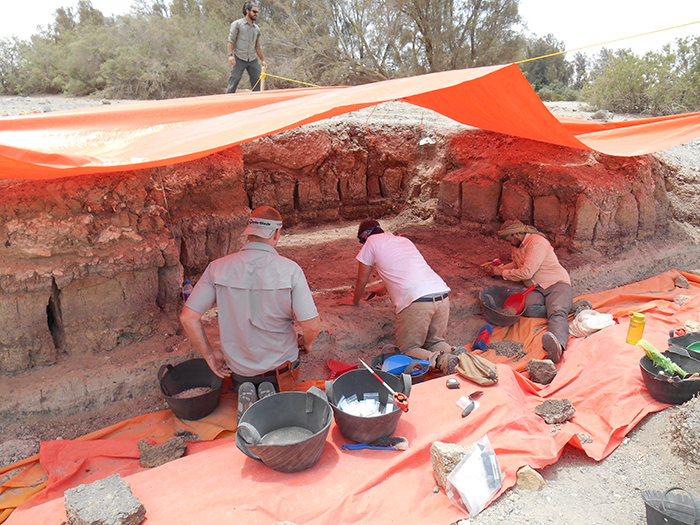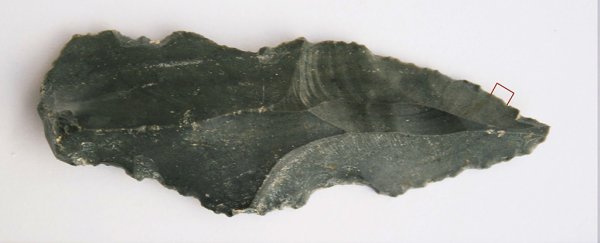New findings at an archaeological dig near near Azraq, Jordan have revealed ancient stone tools that hint at what was in the original palaeo diet – and apparently, horses and rhinos were regularly on the menu.
At 250,000 years old, this evidence of our ancient ancestors' diets goes back way further than we've ever seen before. Previously, the oldest evidence we had was some animal residue found on stone tools dated to just 11,500 years ago.
The discovery takes us back to the Middle Pleistocene, the era from which the oldest known human DNA dates. Of around 10,000 tools that were excavated, 17 were found to have animal protein residue (including blood) on them, and that organic matter helps us to understand our distant ancestors like never before.
It turns out, we ate pretty much anything we could catch.
"For the first time, we have direct evidence of exploitation by our Stone Age ancestors of specific animals for subsistence," said palaeoanthropologist April Nowell from the University of Victoria in Canada. "The hominins [early humans] in this region were clearly adaptable and capable of taking advantage of a wide range of available prey, from rhinoceros to ducks, in an extremely challenging environment."
Rhino on Mondays, duck on Tuesdays, perhaps?
What we don't yet know is how these early humans could take down a rhino and carve up its carcass, both of which would've taken a substantial amount of effort.
Experts from the University of Victoria worked together with partner universities in the US and Jordan to collect and analyse the tools.
 The dig at the Azraq Oasis. Credit: University of Victoria
The dig at the Azraq Oasis. Credit: University of Victoria
The researchers say it looks as though the hominins who lived where these tools have been discovered were more sophisticated than previously thought, because they were able to catch horses, cattle, and camels, as well as rhinoceroses and those somewhat less daunting ducks.
The excavated area, located in the northwest of Jordan, is now mostly desert, but at the time these tools were being used, it would have been a fertile wetland. The team says the same techniques they've used here – quite literally squeezing blood from a stone, in a manner of speaking – could also be applied to even older tools.
"The proteins, blood, and fat tissues get pushed into those little fissures and crevasses [of the tools] and they preserve well in those little crevasses and those microfractures," Nowell told Dirk Meissner at The Toronto Star.
A residue-matching process involving animal antibodies was then used to confirm the findings, which could help to explain how human beings spread out across Eurasia in the search for food.
For now, though, we have to give credit to these proto-humans who could kill and eat anything from a rhino to a duck. These people were "adaptable, opportunistic, and capable of exploiting a wide range of fauna", the authors write in the Journal of Archaeological Science.
"Once people start to realise these organics do survive much better than we had thought, people more and more will start looking for them," Nowell told The Toronto Star, "and the amount of data we're going to have about the diet and the strategies of these early humans is just going to skyrocket."
